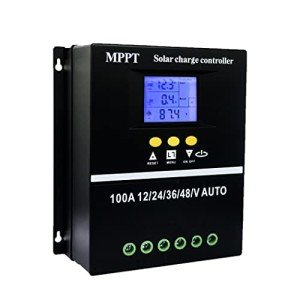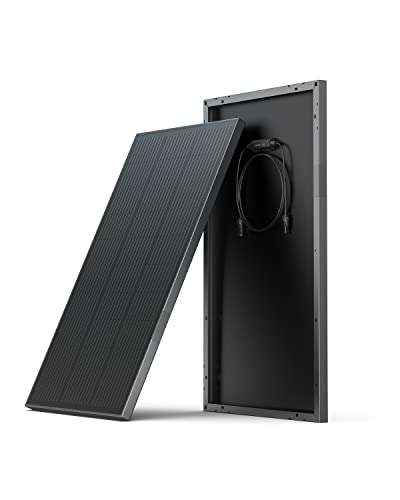Choosing the right solar panels can feel a bit overwhelming, but it doesn't have to be. Start by thinking about your energy needs. Take a look at your electricity bills to see how much energy you use each month. You want solar panels that can cover a good chunk of that usage.
Next, consider the type of solar panels. There are three main types: monocrystalline, polycrystalline, and thin-film. Monocrystalline panels are efficient and take up less space, making them great for smaller roofs. Polycrystalline panels are usually more affordable, but they take up more space. Thin-film panels are lightweight and flexible, good for certain roof types, but they generally have lower efficiency.
Don't forget about the warranty! A good warranty can give you peace of mind. Look for panels that come with a solid performance guarantee. This shows the manufacturer’s confidence in their product and your investment is protected over the years.
Lastly, think about the solar installation process. Working with professionals can make "Installing Solar Panels On Roof" a breeze. They can help you assess your roof's suitability and make the whole process smoother. Ask for quotes, check reviews, and find a team that feels right for you. Happy solar shopping!
Preparing Your Roof for Installation
Getting your roof ready for installing solar panels is a crucial step. You want to make sure everything is set up perfectly so the installation goes smoothly. Here’s how to do it:
First, take a good look at your roof. Check for any damage or wear and tear. You need a solid surface for the solar panels to sit on. If you see missing shingles, cracks, or any other issues, get those fixed before moving forward. A healthy roof makes for a successful solar setup.
Next, clear away any debris. This means removing branches, leaves, or anything else hanging out up there. You don’t want anything blocking the sunlight from reaching your panels. If your roof has a lot of trees around, consider trimming some branches to allow for better sun exposure.
Then, think about the orientation and angle of your roof. Ideally, you'll want your solar panels facing south at a slight tilt for maximum sun exposure. If your roof isn't positioned that way, don’t worry. There are other options, like adjustable mounts, but it’s something to keep in mind when installing solar panels on your roof.
Lastly, check for shading issues. Look around your property for anything that might cast a shadow on your panels during the day. It could be buildings, trees, or even chimney stacks. Any shading can cut down on how much energy your panels produce, so keep that in mind when planning your installation.
100A MPPT Solar Charge Controller with LCD Display
Enjoy smarter energy management with this powerful solar charge controller featuring an easy-to-read LCD display
Product information
$44.99
Product Review Score
4.77 out of 5 stars
201 reviewsProduct links
Step by Step Installation Process
Ready to tackle the exciting journey of installing solar panels on your roof? Let’s break it down step by step so you can get shining with that solar energy in no time!
First up, you’ll want to gather all your materials and tools. You'll need the solar panels, mounting brackets, wiring, and tools like a drill, a wrench, and a level. It’s like preparing for a mini adventure, so make sure you have everything on hand before you start!
Next, prepare your roof. You need a clean and solid surface. Give the roof a good inspection to ensure there’s no damage or debris. Once it's clean, lay out your solar panel layout. Think about how many panels you want and where they’ll fit best for maximum sunlight exposure. It’s all about optimizing those rays!
Now, it’s time to start the actual installation. Secure the mounting brackets to your roof, following manufacturer instructions for proper placement. Double-check the level as you go. Then, attach the solar panels to these brackets. Make sure they’re tight and secure—no one wants a panel flying off during a storm!
After your panels are up, it’s wiring time. Connect the panels to the inverter and your home’s electrical system, following electrical codes and guidelines. If you’re feeling unsure about this part, don’t hesitate to get a pro involved. Safety first! Once everything’s connected, turn on your system and bask in the satisfaction of knowing you’re now generating your own clean energy. Happy solar power!
BougeRV Yuma 100W Flexible Solar Panel System
Experience unmatched versatility and power efficiency for your off-grid adventures with the BougeRV Yuma 100W Flexible Solar Panel System
Product information
$269.99 $219.99
Product Review Score
4.48 out of 5 stars
144 reviewsProduct links
Enjoying the Benefits of Your Solar Panels
Once you've made the leap into installing solar panels on your roof, the benefits start rolling in. First off, there’s the savings. After the initial investment, you’ll notice your energy bills taking a nosedive. Imagine using sunlight to power your home while your electricity costs shrink!
Then there’s the good stuff for the planet. By harnessing solar energy, you’re cutting down on carbon emissions. It feels great knowing you’re helping to create a cleaner environment for everyone. Plus, many areas offer incentives and tax credits for using renewable energy, which makes the whole setup even sweeter.
Let’s not forget about the value boost for your property. Homes with solar panels tend to sell faster and at a higher price. It’s a win-win situation if you ever decide to move. Not only do you enjoy the current benefits, but you’re also making a smart investment for the future.
Lastly, there's the satisfaction of self-reliance. With solar panels on your roof, you’re less reliant on the power grid. On sunny days, you’ll feel empowered knowing you’ve got your own energy source. It’s a pretty awesome feeling to be part of the renewable energy movement!






